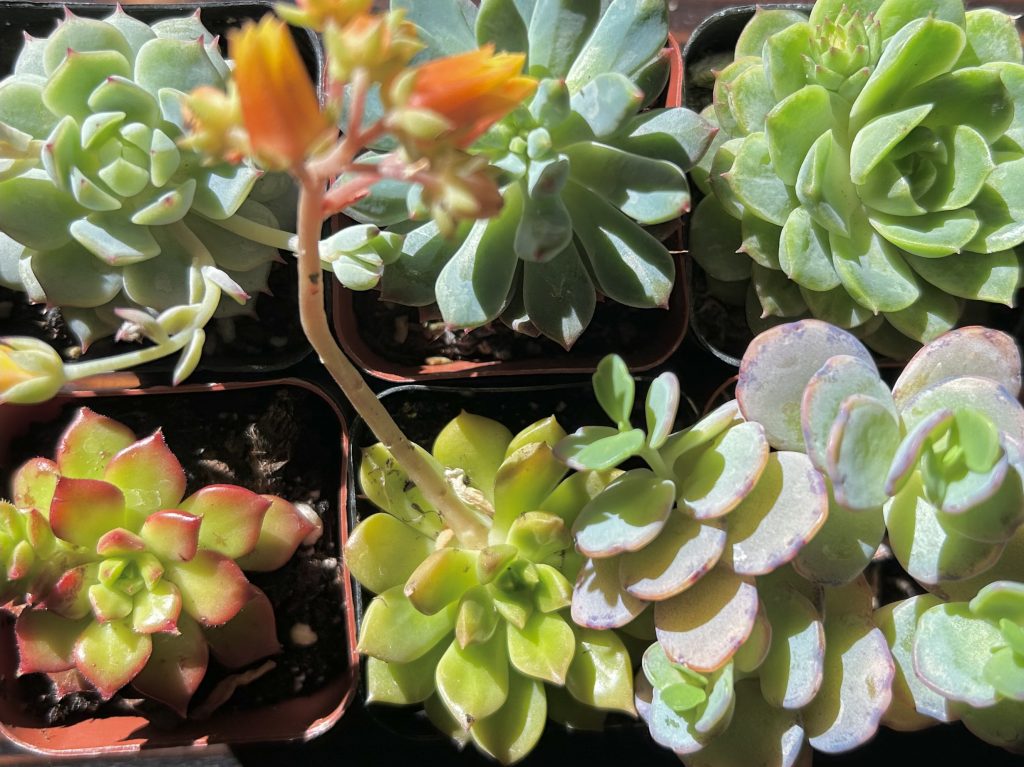Succulents come in a wide variety of colors and shapes, from compact rosettes to tall shrubs and trailing vines. The thick leaves and stems of succulents store water, allowing them to survive extended periods of drought. Most succulents are native to hot, dry climates like deserts or savannahs, but they can be found in many regions world wide. Most succulents are pet-friendly, however, jades, euphorbias, and senicos, such as String of Pearls are toxic. Always check to ensure your specific succulent is non toxic!
Succulents prefer bright, indirect light, with certain species thriving in direct light.
Water with filtered or rain water when soil is 90% dry. In the wintertime, let them dry out 100%.
Most succulents will thrive in temperatures ranging from 60 degrees to 90 degrees, with certain species better adapted to extreme heat and cold. They do not require high humidity, as they are native to dry climates.
Succulents reproduce best from propagated leaves. Gently remove a healthy leaf, and lay it on top of some soil. Within weeks, the leaf will start to root and, eventually, you will see a tiny plant at the base of the leaf. Let the big leaf completely dry up and shrivel away before picking it off; all the water the new plant needs is coming from that parent leaf.
These are all signs of overwatering. The bottom leaves will show these signs first, as they are closer to the root system. There is a very good chance these leaves will fall off. it.
Though you can hope that the soil dries out and only affects a few leaves, the best course of action to ensure the life of your succulent is to repot it with dry soil. If root rot has already set in, you might need to trim off the rotten roots, or even cut off the healthy top of the succulent and allow it to reroot. If you can’t salvage the whole plant, you can take the healthy leaves off and propagate them.
Wrinkled succulent leaves are caused by the elusive underwatering. This will usually happen after a long, long period of no water. Your succulent has been drinking the stored water in the leaves, and now that that’s depleting, it needs some more water! Double-check your soil to confirm the dryness, then water thoroughly.
